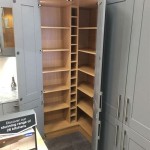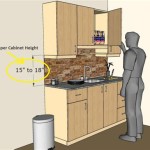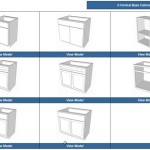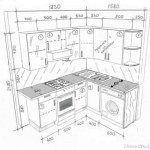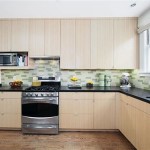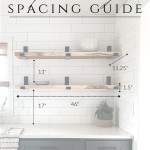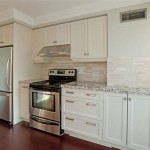Kitchen Cabinet Drawing Program: A Guide to Design and Visualization
The design and renovation of a kitchen often involve a significant investment of time, money, and effort. Ensuring a successful outcome requires meticulous planning and precise visualization of the intended design. Kitchen cabinet drawing programs have emerged as essential tools for professionals and homeowners alike, offering a digital platform to conceptualize, refine, and present kitchen cabinet designs with accuracy and realism.
These programs facilitate the creation of detailed floor plans, elevation drawings, and 3D renderings, enabling users to explore various cabinet styles, finishes, and configurations before committing to a physical installation. The benefits extend beyond mere aesthetics, encompassing improved accuracy in material estimation, streamlined communication between stakeholders, and a reduction in costly errors during the construction phase.
Key Point 1: Functionality and Features of Kitchen Cabinet Drawing Programs
The capabilities of kitchen cabinet drawing programs vary depending on the software's sophistication and intended user base. However, several core functionalities are commonly found across different platforms. These include a comprehensive library of cabinet components, tools for creating accurate floor plans, options for customizing cabinet dimensions and finishes, and features for generating realistic 3D visualizations. The software often integrates with industry-standard file formats, facilitating seamless collaboration with contractors, suppliers, and other design professionals.
A crucial aspect of these programs is the ability to create detailed floor plans. Users can input the precise dimensions of the kitchen space, including walls, doors, windows, and existing appliances. The program then allows for the placement and arrangement of cabinets, islands, and other kitchen elements, enabling users to experiment with different layouts and configurations. Some programs even offer automated features for optimizing cabinet placement based on ergonomic principles and workflow efficiency.
Customization options are also paramount. Users can select from a wide range of cabinet styles, from traditional to contemporary, and customize their dimensions, materials, and finishes. The programs typically offer a vast library of textures and colors, allowing users to accurately simulate the appearance of different wood species, paint colors, and hardware options. This level of customization enables users to create a kitchen design that reflects their personal preferences and complements the overall aesthetic of their home.
The generation of realistic 3D visualizations is perhaps one of the most compelling features of these programs. By creating photo-realistic renderings of the proposed kitchen design, users can gain a clear understanding of how the finished space will look and feel. These visualizations can be used to identify potential design flaws, experiment with different lighting schemes, and showcase the design to clients or family members. Some programs even offer virtual reality (VR) integration, allowing users to immerse themselves in the virtual kitchen and experience the design in an even more realistic way.
Beyond these core functionalities, many kitchen cabinet drawing programs offer additional features that enhance their value. These may include tools for generating detailed material lists, calculating project costs, and creating cut lists for cabinet construction. Some programs also integrate with online ordering systems, allowing users to directly purchase cabinets and hardware from suppliers. The availability of these advanced features can significantly streamline the kitchen design and renovation process.
Key Point 2: Benefits of Using Kitchen Cabinet Drawing Programs
The adoption of kitchen cabinet drawing programs offers a multitude of benefits for both professionals and homeowners. These benefits range from improved design accuracy and reduced errors to enhanced communication and streamlined project management. By leveraging the capabilities of these programs, users can significantly increase the efficiency and effectiveness of their kitchen design projects.
One of the primary benefits is the enhanced accuracy in design and material estimation. By creating detailed floor plans and 3D models, users can identify potential design flaws and ensure that all dimensions are accurate before ordering materials. This reduces the risk of costly errors during the construction phase, such as ordering the wrong size cabinets or miscalculating the amount of countertop material needed. The programs also automate the process of generating material lists, ensuring that all necessary components are accounted for.
Improved communication and collaboration are also significant advantages. By sharing the digital design files with contractors, suppliers, and other stakeholders, users can ensure that everyone is on the same page and that the project is executed according to the intended design. The 3D visualizations can be particularly helpful for conveying the design concept to clients or family members who may not be familiar with architectural drawings. This fosters a collaborative environment and reduces the likelihood of misunderstandings or misinterpretations.
Streamlined project management is another key benefit. The programs can help users track the progress of the project, manage budgets, and coordinate the activities of different contractors. By generating detailed schedules and task lists, users can ensure that the project stays on track and within budget. The integration with online ordering systems can also simplify the procurement process, allowing users to quickly and easily order the necessary materials.
Furthermore, kitchen cabinet drawing programs empower homeowners to take a more active role in the design process. By experimenting with different layouts, cabinet styles, and finishes, homeowners can gain a better understanding of their preferences and create a kitchen that truly reflects their personal style. This can lead to a more satisfying and functional kitchen that meets their specific needs and lifestyle.
Key Point 3: Types of Kitchen Cabinet Drawing Programs and Selection Criteria
The market offers a wide variety of kitchen cabinet drawing programs, ranging from free, basic software to sophisticated, professional-grade applications. The choice of program depends on the user's skill level, budget, and specific requirements. Understanding the different types of programs available and the key selection criteria is essential for making an informed decision.
Free or low-cost programs are often suitable for homeowners who are undertaking a small kitchen renovation project or who simply want to experiment with different design ideas. These programs typically offer a limited set of features and may not provide the same level of accuracy or realism as professional-grade software. However, they can be a good starting point for users who are new to kitchen design and want to learn the basics.
Professional-grade programs are designed for architects, interior designers, and kitchen remodeling professionals. These programs offer a comprehensive set of features, including advanced customization options, realistic rendering capabilities, and integration with industry-standard file formats. They often come with a higher price tag but provide the tools and functionality needed to create complex and detailed kitchen designs.
Cloud-based programs are becoming increasingly popular. These programs are accessed through a web browser and offer the advantage of being accessible from anywhere with an internet connection. They also eliminate the need to install and maintain software on a local computer. Cloud-based programs often offer collaborative features, allowing multiple users to work on the same design simultaneously.
When selecting a kitchen cabinet drawing program, several key criteria should be considered. These include the ease of use, the availability of training and support, the level of customization offered, the realism of the rendering capabilities, and the compatibility with other software and file formats. It is also important to consider the cost of the program and whether it fits within the user's budget.
Ease of use is a critical factor, especially for users who are not experienced with CAD software. The program should have a user-friendly interface and intuitive tools that are easy to learn and use. The availability of training and support is also important, as users may need assistance with learning the software or troubleshooting technical issues. The program should offer comprehensive documentation, tutorials, and access to a support team.
The level of customization offered by the program is another key consideration. Users should be able to customize cabinet dimensions, materials, finishes, and hardware options to create a kitchen design that meets their specific needs and preferences. The program should also offer a wide range of cabinet styles and configurations to choose from.
The realism of the rendering capabilities is important for creating accurate and compelling visualizations of the proposed kitchen design. The program should be able to generate photo-realistic renderings that accurately depict the appearance of the cabinets, countertops, appliances, and other kitchen elements. The renderings should also accurately simulate lighting conditions and material textures.
Finally, the compatibility with other software and file formats is important for ensuring seamless collaboration with contractors, suppliers, and other design professionals. The program should be able to import and export industry-standard file formats, such as DWG, DXF, and SKP. This allows users to share their designs with others and integrate them with other design and construction software.

Cabmaster Cabinet Closet Kitchen Design

Cabinet Design With Cutlist Cabinetfile Free

Cabinet Design Free Templates For Cabinets

Kitchen Cabinet Designs One Way To Do It Sketchlist3d

Cnc Cabinet Design To Turbocharge Ion
Looking For Kitchen Cabinet Drawing Program Canadian Woodworking And Home Improvement Forum

3a 2024 Design Cabinet Tutorial Part 1

Kitchen Design Chief Architect

Best Free Kitchen Design Options And Other Tools

5 Best Cabinet Design For Mac Windows Free Paid
Related Posts

